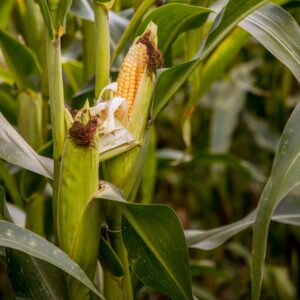
Photo: Lynch gives an overview of conservation work on farms.
To reach this stage of ecosystem service, the ORCT looks at halting the degradation caused by:
Landowners are advised to burn in late summer or early autumn (the most favourable time for palatable grasses and bulbs in the Renosterveld), and also not to burn too frequently (every seven to twelve years). The veld should be left for 18 – 24 months afterwards (no grazing). Apart from the expertise supplied by the ORCT, landowners can also access funding for activities like ecological burns and subsequent fencing.
Much of the rehabilitation work happens by looking after the watercourses (the subject of the previous blog) and corridors on land. Corridors between farm lands, especially corridors around watercourses, are encouraged as good agricultural practice, and have certain advantages to landowners:
Several times during the day, Curtis-Scott could be seen photographing plants and flowers, and I would later read that a member of the legume family, Polhillia curtisiae, is named after her. The handbook that the ORCT makes available to farmers, The Overberg Rûens Renosterveld, includes a brief overview of the region’s mammals, birds, insects, reptiles, amphibians, spiders and scorpions. Most of the photographs are credited to Curtis-Scott. I envy the world she sees and knows while we all look on the same view.
A small party went to have a closer look at rehabilitation efforts in a gully, visible from two kilometres away (covered in the next blog), after which we board the bus.
We had been on the tar for some ten kilometres when we noticed three blue cranes on our left. Appreciation gave way to excitement as several more were spotted as the bus came to a halt. I counted a total of seventeen of this species which was previously on the critically endangered list but has now been relegated to vulnerable but stable.
Earlier, Keir Lynch had said: “In the Overberg, conservation didn’t save the blue cranes: agriculture did”. The bus is on the move again and we travel mostly in silence, glad to be out of the sun as we digest the results and future potential of the interventions we have seen this day.